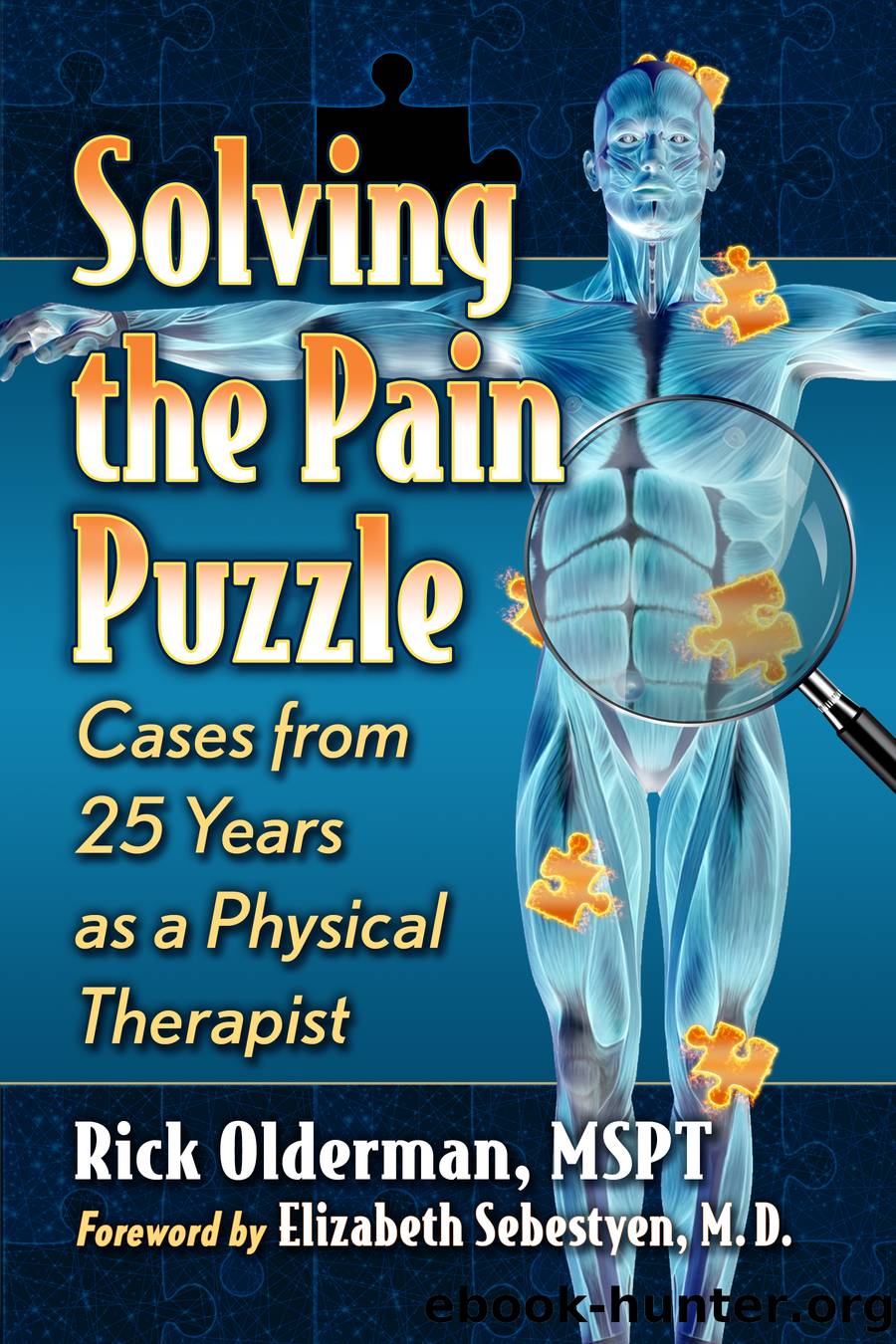Solving the Pain Puzzle: Cases from 25 Years as a Physical Therapist by Rick Olderman MSPT

Author:Rick Olderman, MSPT
Language: eng
Format: epub
Publisher: McFarland & Company, Inc., Publishers
Published: 2023-02-27T00:00:00+00:00
10
Reading Hidden Signals: Three Pains in the Neck
My sophomore year playing high school football, I began to have frequent âstingersâ in my left shoulder. Stingers are the result of a nerve getting pinched or stretched due to poor technique when tackling. These are no fun at all, as any young (or even pro) football player can tell you. They sent electric shocks down my arm. In the last part of our season, the stingers became a normal part of practice and games for me. I figured Iâd have to live with them.
We had a weight training system in our basement at our farm that I would use three to four days a week. It was a Universal system, with weight stacks in the center and a bench press and pulleys on the sides. Slowly I lost the ability to hold the handles with my left hand. When bench pressing, I would twist my trunk in order to press weight off my chest on the left sideâvery bad form. Also while my right biceps could curl 30 pounds, I struggled with five pounds on my left. I could barely lift my left arm above my head.
I tried to ignore it, work around it, and I didnât tell anyone. Not my coaches, not my parents. This was not from some stoic standpoint; I just never thought that it rose to the level of importance to tell anyone. After all, my arm still moved and I had no loss of sensation to my knowledge.
Football merged into wrestling season. I managed to pin a few opponents, but I found that I couldnât use my left arm to leverage any holds or my left hand to grip. Wrestlers would pull my fingers apart as if they were cheap chopsticks. My left arm was only useful as a decoyâit really had no other value on the mat. It wasnât until I was knocked unconscious during a match that my parents realized there was a problem. They had no idea and were properly, Âgrown-up concerned. They took me to a doctor.
âLift your arms,â he said. He placed a hand on each of mine. With a slight touch of his hand, my left arm fell down to my side like a wet noodle. He pressed harder and harder on my right. It didnât budge. I was shocked. I knew it was weak, but this simple test revealed just how weak.
âYouâve got extensive nerve damage,â he said. I wasnât to lift anything, not even my schoolbooks, for the next six to 10 months. My wrestling coach was not happy and made occasional derisive comments. After all, I looked completely normal, especially when I wore a long sleeve shirt to hide my skinny left arm.
The coach was young, and I donât think he knew any better. After all, I wasnât in a cast and had no obvious injury. Thatâs often how injuries went in those days and maybe to some extent todayâpeople have a hard time empathizing with someone if theyâre not in some kind of cast or donât have a scar to show.
Download
This site does not store any files on its server. We only index and link to content provided by other sites. Please contact the content providers to delete copyright contents if any and email us, we'll remove relevant links or contents immediately.
Dynamic Alignment Through Imagery by Eric Franklin(4176)
Body Love by Kelly LeVeque(3030)
Barron's AP Calculus by David Bock(1797)
EMT Exam For Dummies with Online Practice by Arthur Hsieh(1673)
The Juice Lady's Remedies for Asthma and Allergies by Cherie Calbom(1628)
Fitness Walking For Dummies by Liz Neporent(1544)
Flight by Elephant(1509)
Extremes: Life, Death and the Limits of the Human Body by Fong Kevin(1502)
McGraw-Hill Nurses Drug Handbook by Patricia Schull(1477)
The Natural First Aid Handbook by Brigitte Mars(1448)
Tell by Major Margaret Witt(1411)
Skin by Unknown(1397)
Seeing Voices by Oliver Sacks(1387)
The Yoga Bible by Christina Brown(1298)
Born to Walk by James Earls(1291)
Cracking the Nursing Interview by Jim Keogh(1268)
First Aid for Colleges and Universities (10th Edition) by Mistovich Joseph J. & Limmer Daniel J. & Karren Keith J. & Hafen Brent Q(1240)
The Way to Divine Knowledge by William Law(1232)
The Advantage by Lencioni Patrick M(1189)
